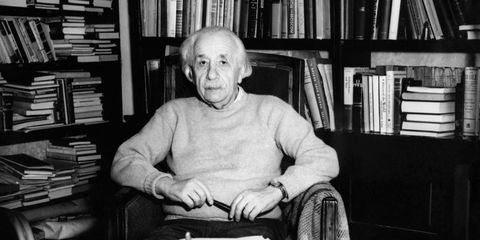100 Years Ago, Albert Einstein Became a Legend
On November 6, 1919, Arthur Eddington's presentation to the Royal Society and Royal Astronomical Society about a solar eclipse confirmed Einstein's theories, skyrocketing the theoretical physicist to fame.

Albert Einstein, the wire-haired physicist, whose worked reshaped our understanding of the universe, is a household name—but that wasn't always the case.
Before 1919, only a handful of scientists knew of Einstein's pivotal work, and fewer still supported it. If not for the effort of a small group of British scientists, who recognized Einstein's genius and determined to push past war and stigma, we may never have learned of humanity's most important achievement.
But on November 6, 1919, British scientist Arthur Stanley Eddington would change the course of Einstein's life forever.
The Theory That Changed Everything
In 1916, Einstein had published the mathematical details for his general theory of relativity, in which he proposed that light and time could be bent or deflected by the gravitational field of massive objects in the universe, like the sun. Sir Isaac Newton had made similar claims in his 1704 treatise, Optiks, but he wasn’t able to quantitatively prove this phenomenon. A century later, German mathematician Johann Georg von Soldner published the first calculations quantifying Newton’s work in 1804.
But Einstein took Newton's original claims a step further. Instead, he proposed that this phenomenon occurred not because of a specific force but because of curvature in space—much like how placing a heavy weight in the center of a mattress causes it to sag, pulling any object rolled across it toward the center. He suggested that the values at which light deflected would be much higher than others, including Newton, anticipated./.../
No comments:
Post a Comment